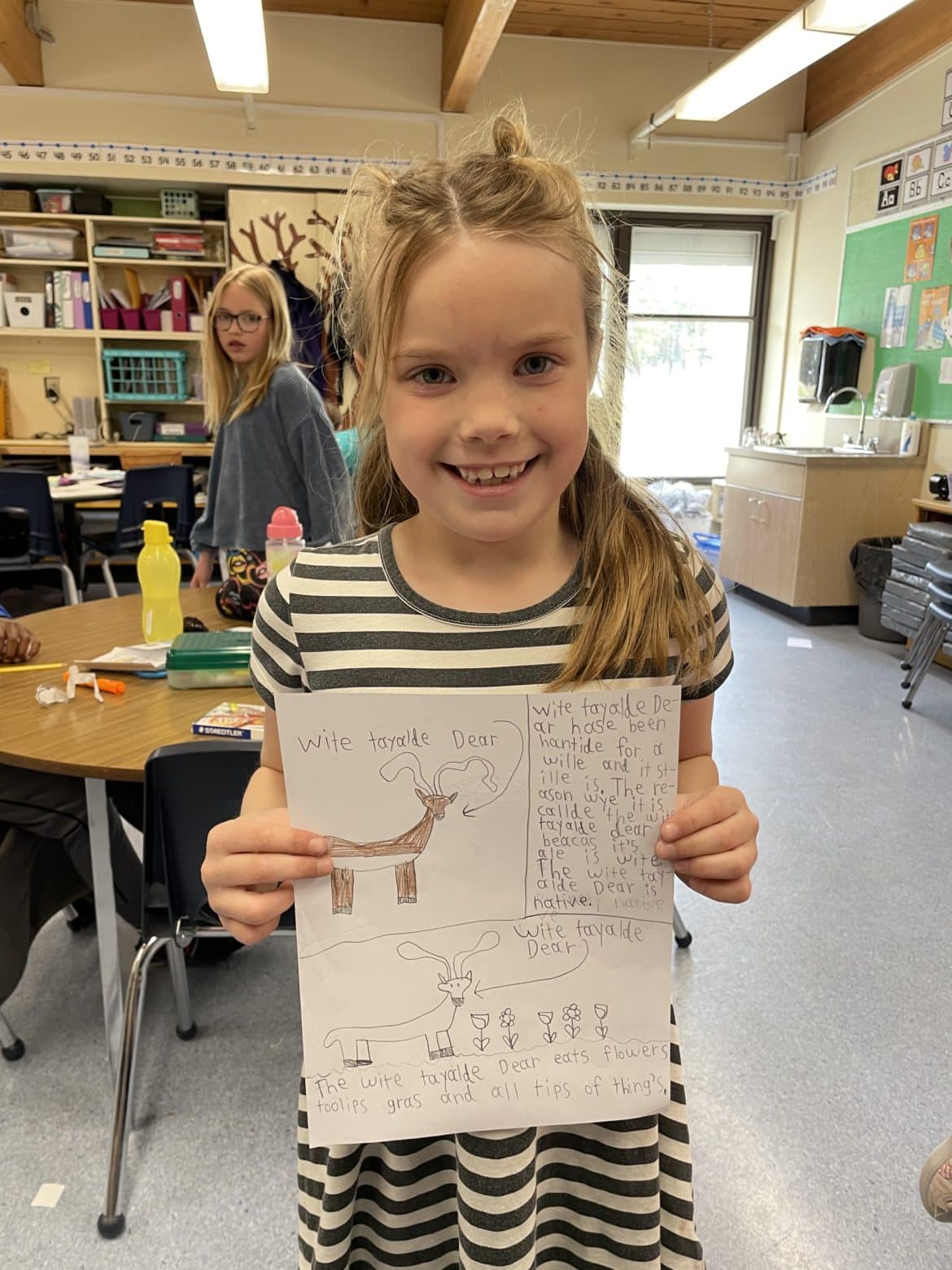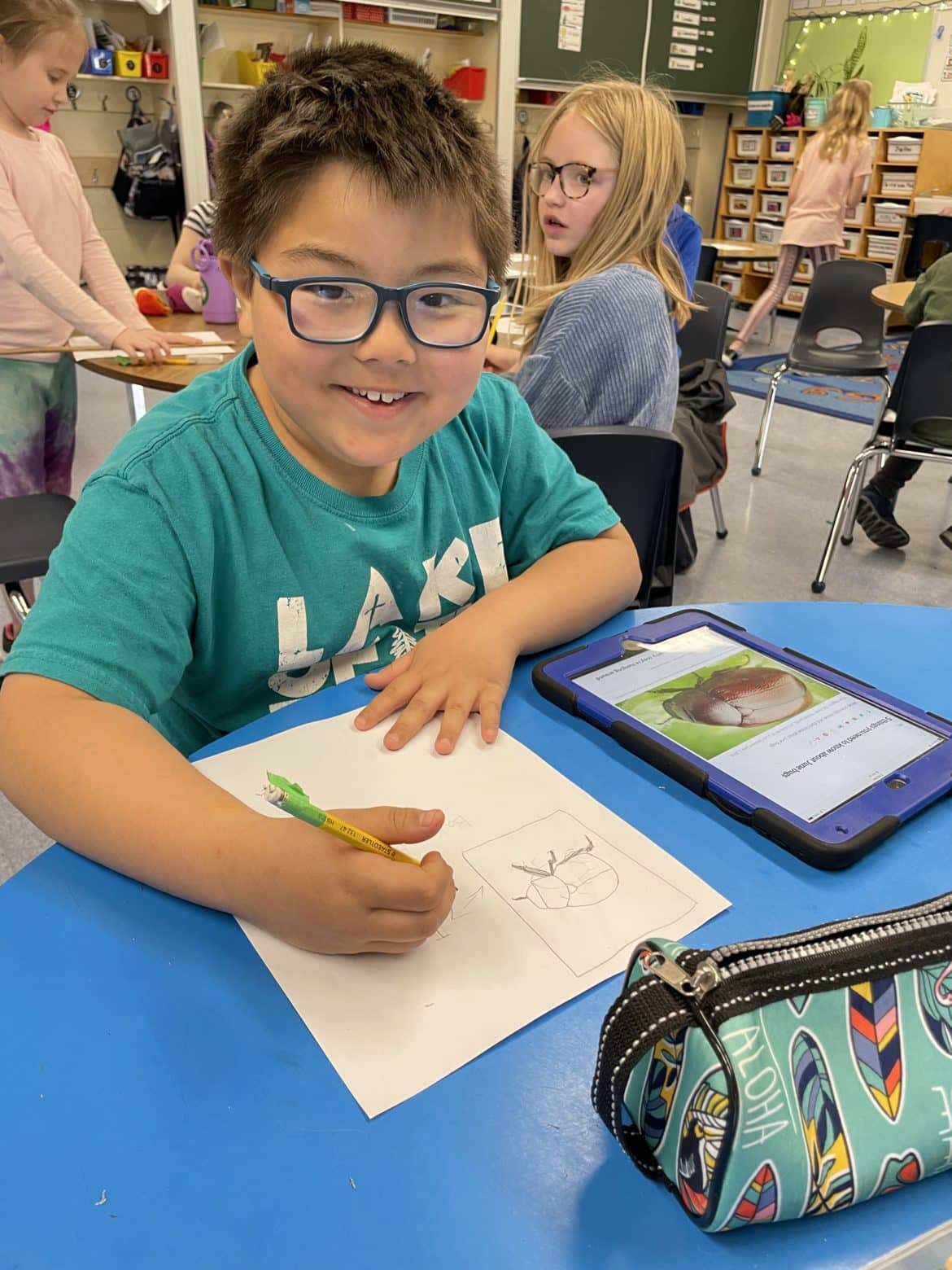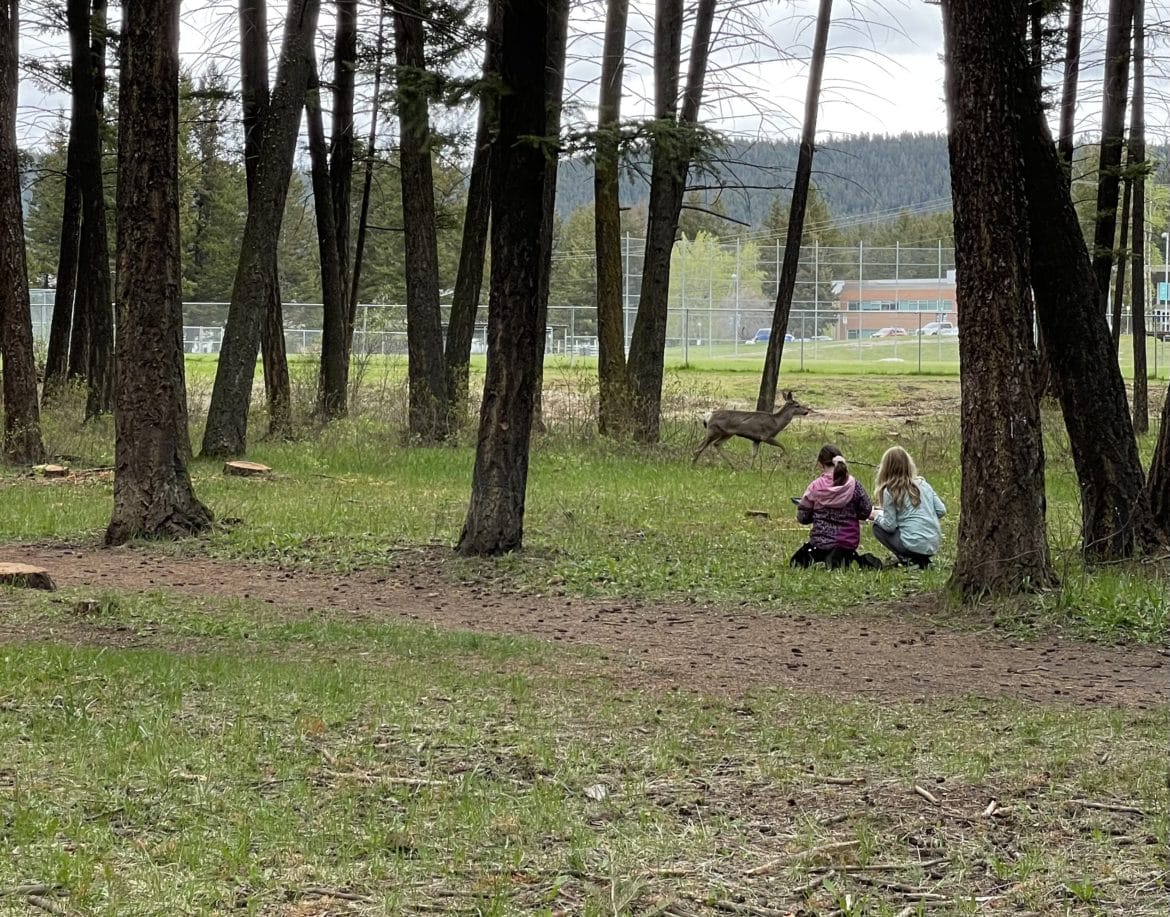June 3rd, 2022
This May, École Nesika students looked a little more closely at what grows in their backyards with the Invasive Species Council of BC. They were on a mission to find species growing in their community to include in a special field guide for kids to be developed by The Council.
Not only will the kid-friendly field guide include native species children are curious about, it will also include some invasive species to avoid. “We hope that a kid’s field guide for the area will act as an engaging and age-appropriate learning tool to connect kids to their natural environment” says Cariboo Coordinator Camille Sangarapillai.
Students started the project by investigating existing field guides and choosing things they liked from each. They decided that pictures, fun facts and the species’ names (common, Latin, and Secwépemc) were important to include in a kid’s field guide. One of the teachers remarked how excited they were that the students were enchanted by the technical field guides and wanted to make their own!


The following week, Nesika students took to their schoolground forest to find species to include in the guide. They searched from the ground to the sky for animals and plants living there. Special species found include towering Douglas Fir trees, bounding mule deer, and nodding onion. A few students came across a cheerful light-yellow flower, in full bloom despite a cool spring, that they identified as Rough-fruited fairybells belonging to the lily family. These species are native to Williams Lake and are part of healthy ecosystems.
While the students mostly encountered native species, they did find an invasive plant known as Western Goatsbeard. It has bright yellow flowers that, when they turn to seed, resemble giant dandelion heads. This was a great opportunity for the youth to learn strategies to curb the spread of invasive species, in this case to avoid blowing on Western Goatsbeard seedheads.
The Council is using the list of student-identified species to help create the field guide and will be working with Williams Lake First Nation youth in early July to add more. The goal is to have a field guide for kids in the Cariboo by kids in the Cariboo. The guides will be developed throughout the summer and will be distributed to communities around the Williams Lake Community Forest in the fall.
“I was so impressed by their exploration and observations. I have lived in the Cariboo for a long time and had never observed fairybells in flower. I can’t wait to see kids out on community trails with their guides in hand,” remarked Camille.
This project was generously funded by the Williams Lake Community Forest, a joint partnership between the City of Williams Lake and Williams Lake First Nation.

Camille Sangarapillai is the Cariboo Coordinator and an Education Facilitator at ISCBC. She is grateful to live, work, and play on the traditional lands of the Secwépemc and Tŝilhqot’in Nations. In her spare time, she enjoys foraging, gardening, sewing and spending time with her children in the great outdoors. You can reach Camille at schools@bcinvasives.ca.
Share


















